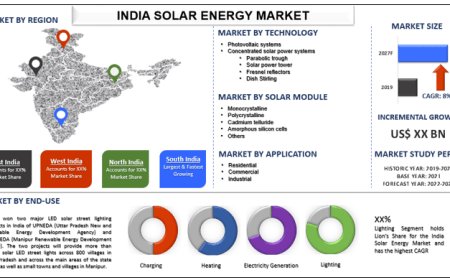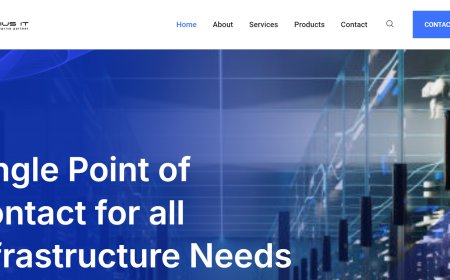Unlocking Hidden Value: The Power of Surplus Management in Energy
Discover how strategic surplus management in energy boosts profits, efficiency, and sustainability. Learn to turn excess materials into assets and overcome industry challenges.

The Critical Need for Strategic Surplus Management in Energy
The energy sector, a colossal engine driving global economies, is characterized by massive investments in infrastructure, complex supply chains, and a constant demand for materials and equipment. From oil and gas exploration to the burgeoning renewable energy landscape, projects often involve acquiring vast quantities of resources. However, in an industry marked by fluctuating demands, project changes, and technological advancements, it's inevitable that companies accumulate excess or unused materials and equipment. This accumulation, often termed "surplus," is not merely a benign byproduct; if left unmanaged, it represents significant financial drain and environmental burden.
Surplus management in energy is the systematic process of identifying, categorizing, valuing, and strategically re-deploying or disposing of these excess assets. It's a critical discipline that goes far beyond simply clearing out warehouses. Effective surplus management transforms potential liabilities into valuable opportunities, directly impacting a company's bottom line, operational efficiency, and commitment to sustainability.
Historically, the focus might have been on initial procurement efficiency. However, a holistic view reveals that the lifecycle of materials from acquisition to eventual disposal or reuse is where true value can be unlocked. In an era where resource optimization and environmental responsibility are paramount, neglecting surplus assets is no longer an option.
From Waste to Wealth: The Benefits of Effective Surplus Management
The strategic handling of surplus materials in the energy sector offers a multitude of tangible benefits that resonate across financial, operational, and environmental dimensions.
Financial Gains: Maximizing ROI and Reducing Costs
The most immediate and impactful benefit of robust surplus management is financial. Unused materials sitting in warehouses incur significant holding costs, including storage space, insurance, maintenance, and potential depreciation. By proactively identifying and managing these assets, companies can:
-
Generate Revenue: Selling or redeploying surplus materials can recoup a portion of the initial investment, turning idle assets into cash flow. This revenue can then be reinvested into core operations or new projects.
-
Reduce Procurement Costs: By effectively utilizing existing surplus, organizations can avoid purchasing new materials for future projects. This "internal sourcing" significantly lowers procurement expenses and reduces reliance on external suppliers, especially in volatile markets.
-
Minimize Waste and Disposal Costs: Proper surplus management reduces the volume of materials destined for landfills, thereby cutting down on disposal fees and associated environmental penalties.
-
Optimize Inventory Levels: A well-managed surplus program ensures that inventory levels are lean and efficient, freeing up capital tied up in excess stock.
Operational Efficiency: Streamlining Processes and Enhancing Agility
Beyond the financial benefits, effective surplus management in energy significantly enhances operational efficiency:
-
Improved Resource Allocation: By having a clear picture of available surplus, project managers can quickly access needed materials, reducing lead times and preventing project delays that often arise from material shortages.
-
Streamlined Logistics: Knowing what assets are available and where they are located allows for more efficient transportation and handling, reducing logistics complexities.
-
Enhanced Decision-Making: Comprehensive data on surplus assets empowers better planning and forecasting for future material needs, leading to more informed procurement decisions.
-
Increased Agility: In a rapidly changing energy landscape, the ability to quickly re-purpose or divest assets provides a crucial competitive advantage, allowing companies to adapt to new projects or market shifts with greater ease.
Environmental Stewardship: Fostering a Sustainable Future
The energy sector is under increasing pressure to adopt sustainable practices. Surplus management is a powerful tool in achieving these environmental goals:
-
Reduced Waste Generation: Reusing and recycling materials directly diverts waste from landfills, lessening the environmental footprint of operations.
-
Lower Carbon Emissions: Producing new materials is energy-intensive. By utilizing existing surplus, companies reduce the demand for virgin resources, consequently lowering greenhouse gas emissions associated with extraction and manufacturing.
-
Conservation of Natural Resources: Every item repurposed or recycled means less demand for raw materials, conserving finite natural resources.
-
Enhanced Corporate Social Responsibility (CSR): Demonstrating a commitment to sustainable surplus management improves a company's public image and stakeholder relations, attracting environmentally conscious investors and talent.
Navigating the Challenges: The Path to Effective Surplus Material Management
While the benefits are clear, implementing a robust surplus management in energy program comes with its own set of challenges, particularly in complex industries like oil & gas and renewable energy:
Inventory Complexity and Diverse Assets
The energy sector deals with an enormous variety of materials and equipment, from highly specialized drilling components and turbines to pipes, valves, and electrical cables. Tracking, categorizing, and assessing the condition and reusability of such a diverse inventory can be a daunting task. Furthermore, many assets are large, heavy, and require specialized storage and handling.
Geographically Dispersed Operations
Energy projects often span vast geographical areas, from offshore platforms to remote solar farms. This dispersion makes centralized inventory management challenging and can complicate the logistics of moving surplus materials to where they are needed or to disposal sites.
Market Fluctuations and Asset Valuation
The value of surplus materials can fluctuate based on market demand, commodity prices, and technological obsolescence. Accurately valuing assets and finding suitable buyers or internal users requires expertise and up-to-date market intelligence.
Regulatory Compliance and Environmental Standards
Disposing of certain energy sector materials, especially hazardous ones, is subject to strict environmental regulations. Ensuring compliance and adopting environmentally sound disposal or recycling practices adds another layer of complexity.
Overcoming Challenges with Strategic Partnerships and Technology
To effectively navigate these challenges, energy companies are increasingly turning to specialized surplus management in energy providers. These partners bring:
-
Expertise in Asset Valuation and Market Access: They possess the knowledge to accurately assess the value of diverse energy assets and connect sellers with a global network of potential buyers or internal re-users.
-
Advanced Inventory Management Systems: Leveraging technology, these providers implement sophisticated systems for tracking, categorizing, and managing surplus inventory across multiple locations.
-
Logistical Capabilities: They have the infrastructure and experience to handle the complex transportation and storage of large and specialized equipment.
-
Commitment to Sustainability: Reputable providers prioritize environmentally responsible solutions, ensuring compliance with regulations and promoting recycling and reuse.
Platforms like ReflowX are at the forefront of transforming energy procurement by facilitating sustainable surplus material management. They connect companies with surplus materials to those who need them, fostering a circular economy within the energy sector. By adopting such solutions, businesses can transform their surplus from a burden into a strategic asset, driving both economic growth and environmental stewardship.







































